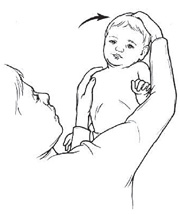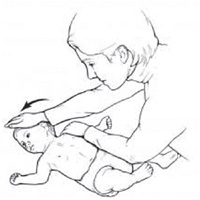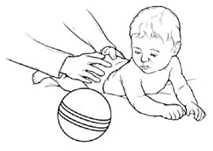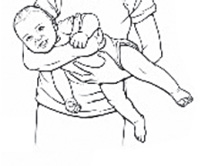Right Torticollis Baby Stretches & Exercises
What is right-sided torticollis?
Right-sided torticollis is a condition where the muscles on the right side of the neck are contracted or tightened, causing the head to tilt to the right and the chin to turn towards the left. This condition, also known as "wry neck" or "cervical dystonia," can result from various causes, including muscle strain, congenital abnormalities, trauma, or other medical conditions.
What are the signs of right torticollis?
The child will bend/tilt the head to the right side and have difficulty turning his her head to the right.
What if it is not corrected?
Untreated torticollis can lead to changes in head shape, uneven facial appearance, cause difficulties with feeding, and affect the way the child plays, sits, looks at objects/people and moves throughout his/her surroundings.
Steps to take to correct right torticollis:
Stretching: lateral tilt
- Place child flat on the floor.
- Hold child’s right shoulder down with your left hand.
- Place right hand on top of the right side of child’s head.
- Slowly bend left ear towards child’s left shoulder.
- Hold position for 30 seconds.
- Repeat 3-4 times.
- Perform 4-5 times a day.

Stretching: rotation
- Place child flat on the floor.
- Place your left hand on your child’s left shoulder.
- Cup your child’s head with the right hand.
- Slowly turn child’s head to the right side.
- Hold position for 30 seconds.
- Repeat 3-4 times.
- Perform 4-5 times a day.

Positioning for Play
- Place the child on his/her side while playing and encourage him/her to bring the hands to midline to play with toys.
- Place the child on his/her stomach. Place toys to the right side to help the child turn his/her face to the right while playing.

Carrying your Child (football hold)
- Hold the child facing away from you.
- Place your left arm between your child’s legs and support your child’s body and grasp the right shoulder with your left hand.
- Position your right forearm between child’s ear and shoulder to help stretch the tight muscles.

Suggestions:
- Position child in crib to encourage child to look to the right.
- While bottle/breast feeding position child to look to the right.
- Use towel rolls to help keep your child’s head in a neutral position.
If you have any questions or concerns please be sure to ask your treating physical or occupational therapist.
Call your doctor or make an appointment here if you are unsure your child has torticollis to obtain a proper diagnosis.
This page was last updated on: June 03, 2025 04:29 PM